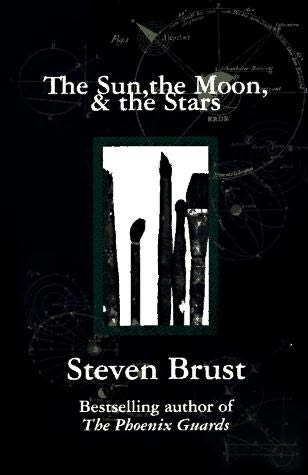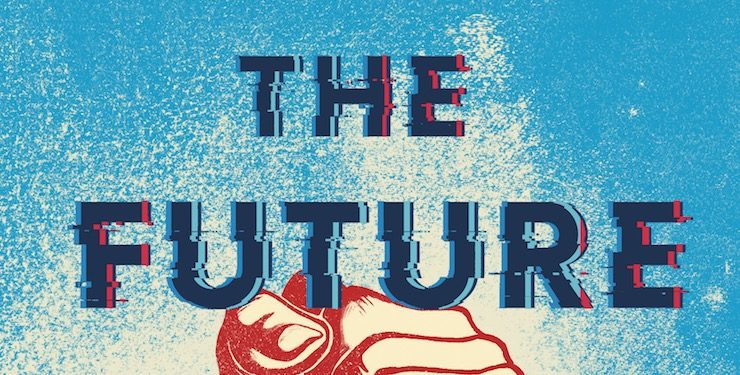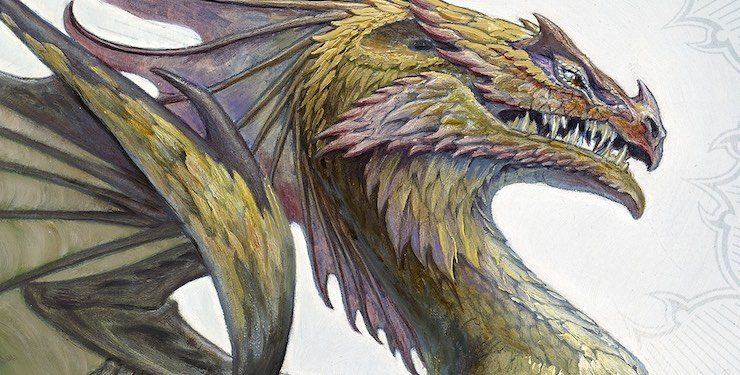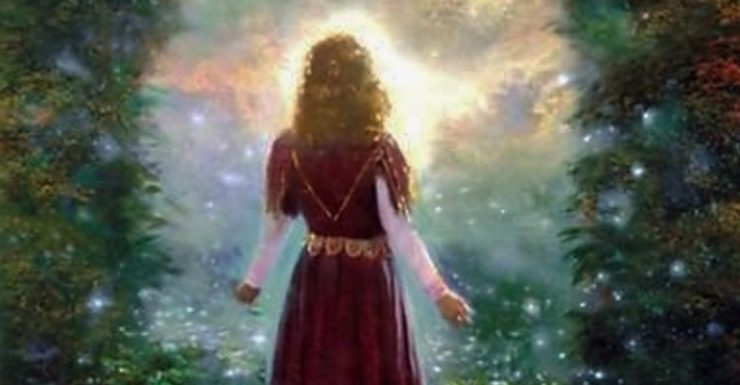The Sun the Moon and the Stars is not what you might expect of a fairytale retelling. Indeed, when it was originally published in Terri Windling’s excellent series of fantasy retellings of classic tales, with a long introduction about what fairytales are and a brief afterword about the Hungarian folk tradition, I imagine it must have been utterly baffling. You’d expect something straightforward like Patricia Wrede’s Snow White and Rose Red, or Charles de Lint’s Jack the Giant Killer, and instead this. It’s the story of a man painting a picture, and at the same time telling, in traditional form, a traditional Hungarian fairytale. It isn’t a fantasy novel at all—it’s a perfectly mainstream novel about a guy painting a picture and telling a story. There’s no fantasy element outside the story. And there’s no direct connection between the story he tells—which is likely to be completely new to most readers—and the other events of the book. It’s literally a fairytale retelling, someone retelling a fairytale, and it’s all told as a fairytale, with the narrator asking “bones?”, meaning “have you had enough yet?” at the end of each chapter, but it really isn’t what people would have been likely to expect.
What makes it brilliant is the way that it’s about the process of creation. Greg Kovacs, a painter, starts to paint in oils on a huge canvas, and as he goes on he discovers what he’s painting and talks about his process. Also he chats and squabbles with the other artists who share a studio with him, considers getting honest work as a draftsman, and decides to put on a show. Considered as plot, it isn’t one, but it’s utterly astonishing all the same because it talks about the way art is made in exactly the kind of way nothing else does—and woven in and out of it is the Hungarian fairytale of a Taltos who tricks and defeats monsters to steal the sun the moon and the stars and put them into the sky. He talks about painting, but it applies to any process of creation, certainly writing. If you want to know how writers actually write, either so you can do it yourself or just out of curiosity, I can’t think of anything better. It’s a book I often re-read near the beginning of starting a project, just to encourage myself.
There are some parallels between the fairytale Greg tells and the rest of the novel. First, the painting is of Apollo and Artemis killing Uranus, and it took me much longer than it should have to see that they are the sun the moon and the stars. Also, the fairytale is about doing something that should be impossible—and some bits of it are unexpectedly easy and other bits unexpectedly difficult, just like the process. There aren’t any exact parallels, and certainly not between the section of the fairytale in each chapter and the events of that chapter, but the loose parallels are there.
The interactions between Greg and the other members of the studio are what gives the book momentum and raises questions you want to see answered—will they survive as a group, will they have a show, will Greg finish his picture? They’re very real people, and Greg’s relationship with them changes, and affects everything else. I really like the way they criticize each other’s work, this is another part of the process of creation you rarely see written about. Brust describes something real here, and when he talks about technique and serendipity, something that you won’t find in books about how to write.
I also like the fact that Greg’s girlfriend, Debbie, is there and supportive throughout the book. You can ask yourself if he deserves her, but they have a romantic relationship that’s steady and doesn’t change. Brust also does this in Jhereg. It’s surprisingly rare for a book not to have a romance subplot—either the hero falls in love or falls out of love and finds new love. I find it really refreshing and unusual to read something that doesn’t have this kind of movement, but an assumed ongoing love. The emotional movement of The Sun the Moon and the Stars is all revolving around creation and art.
The thing that appeals to me least, after multiple re-readings, is the thing that made me pick the book up in the first place—the retelling of the Hungarian fairytale. I don’t skip it, because I keep thinking I’m missing something in it and I’ll eventually figure it out, but I care about the rest of it a lot more. It doesn’t have resonance for me, and the rest of it really does.
I know from previous discussions that some people love this book and others hate it, and it isn’t as simple as writers loving it and non-writers hating it. Both love and hate for it seems to be quite irrational and much stronger than you’d think. It’s a slim little book to inspire such passions. I love it, of course. I used to think that anyone who created art, of any form, would like it, but I now know it doesn’t work for everyone. But I still love it, and come back to it when I want to know that other people do this thing and make it work.
Bones?
Jo Walton is a science fiction and fantasy writer. She’s published eight novels, most recently Half a Crown and Lifelode, and two poetry collections. She reads a lot, and blogs about it here regularly. She comes from Wales but lives in Montreal where the food and books are more varied.














